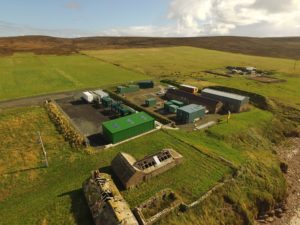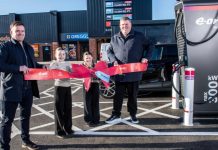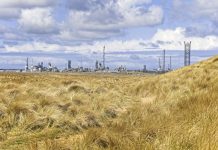
The European Marine Energy Centre (EMEC), Orkney, Scotland will deploy an Invinity Energy Systems 1.8MWh flow battery at EMEC’s tidal energy test site on the island of Eday.
This unique combination of tidal power and flow batteries will be used to power EMEC’s hydrogen production plant, demonstrating continuous hydrogen production from variable renewable generation.
Funded by the Scottish Government, via Highlands and Islands Enterprise (HIE), Invinity’s modular flow battery system will be assembled at the company’s manufacturing facility in Bathgate, West Lothian and consist of eight Invinity VS3 battery modules linked together into a single system. The project is expected to go live next year.
Scotland’s Energy Minister, Paul Wheelhouse, said, “We are delighted to support this world-first innovative energy systems project in Orkney, with £1.8 million of funding from the Scottish Government. The demonstration of hydrogen and systems integration with renewables will be a key part of our energy transition pathways and we look forward to watching the progress of this exciting and pioneering project, building on the strong track record of Orkney and EMEC, in particular, in demonstrating hydrogen and integrated energy systems.’
Invinity’s vanadium flow batteries (VFBs) are a form of heavy duty, stationary energy storage which are deployed in high-utilisation, industrial applications. They provide hours of continuous power, one or more times per day, through decades of service. This makes them the perfect candidate for regulating the generation of tidal energy, an application where more conventional lithium-ion batteries would degrade and eventually wear out.
Tidal generation is predictable yet variable, with two high and two low tides occurring each day. This is an extremely heavy cycling application, requiring up to four cycles per day, compared to solar coupled energy storage projects which typically require just one charge and discharge each day.
At EMEC’s site, the system will store electricity generated by tidal turbines during high power periods, and discharge it during low power periods. This will ‘smooth’ tidal generation to create continuous, on-demand electricity to turn into hydrogen using EMEC’s 670 kW hydrogen electrolyser. This will optimise hydrogen production at the site to enable tonnes of green hydrogen generation each year.
Neil Kermode, managing director at EMEC, said, “EMEC’s core purpose is to demonstrate technologies in new and inspired ways to decarbonise our energy system. This is the first time that a flow battery will have been coupled with tidal energy and hydrogen production, and will support the development of the innovative energy storage solution being developed in the Interreg NWE ITEG project.
“Following a technical review looking at how to improve the efficiencies of the electrolyser we assessed that flow batteries would be the best fit for the energy system. As flow batteries store electrical charge in a liquid rather than a solid, they can provide industrial quantities of power for a sustained period, can deeply discharge without damaging itself, as well as stand fully charged for extended periods without losing charge. These are all necessary qualities to integrate battery technology with the renewable power generation and hydrogen production process.”



